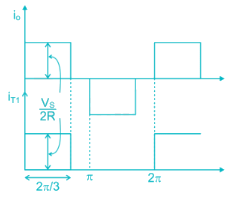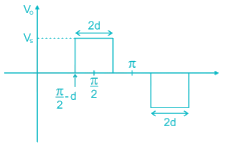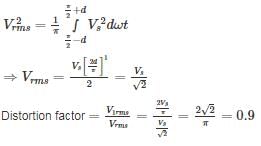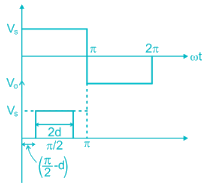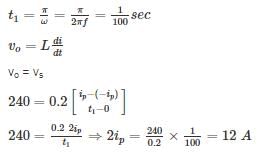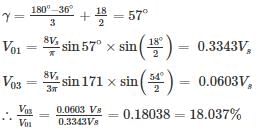Test: Power Electronics- 7 - Electrical Engineering (EE) MCQ
10 Questions MCQ Test - Test: Power Electronics- 7
A three phase bridge inverter is fed from a 500 V dc source. The inverter is operated in 180° conduction mode and it is supplying a purely resistive, star – connected load. The RMS value of the output (line) voltage is
In a three phase voltage source inverter operating in square wave mode, the output line voltage is free from
In single pulse modulation of PWM inverter, 3rd harmonic can be eliminated if pulse width is equal to______ (in degrees)
A three – phase bridge inverter delivers power to a resistive load from a 450 V dc source. for a star connected load if 10Ω per phase. What is the load power for 180° conduction mode ______________ (in kW)
A 3 ϕ bridge inverter delivers power to a resistive load from a 400 V dc. For a star – connected load of 15 Ω per phase, determine load power and R.M.S value of thyristor current for 120° mode
A 3 phase MOSFET inverter is connected between a balanced star connected resistive load with RL = 10 Ω and a 250 V dc supply. The inverter frequency is set at 33 Hz, and the switches have 120° conduction periods. Calculate the load power _______ (in kW)
for a single pulse – width modulation of a single phase inverter, The distortion factor for pulse width of π/2 is ___________
For a load of R = 10 Ω and L = 0.03 H, Find the RMS value of the fundamental component of inverter output current in case inverter of part Quasi-square output with 120° pulse width. The source voltage is 230 V and frequency 50 Hz
The inverter is operated at 50 Hz. In 180° square wave mode. Find the peak to peak inductor i0 in the circuit shown in figure.
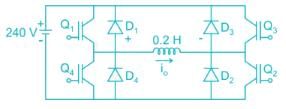
For the symmetrical two pulse modulation with pulse width 36°. Find the percentage of 3rd harmonic in the output voltage  is_______
is_______








